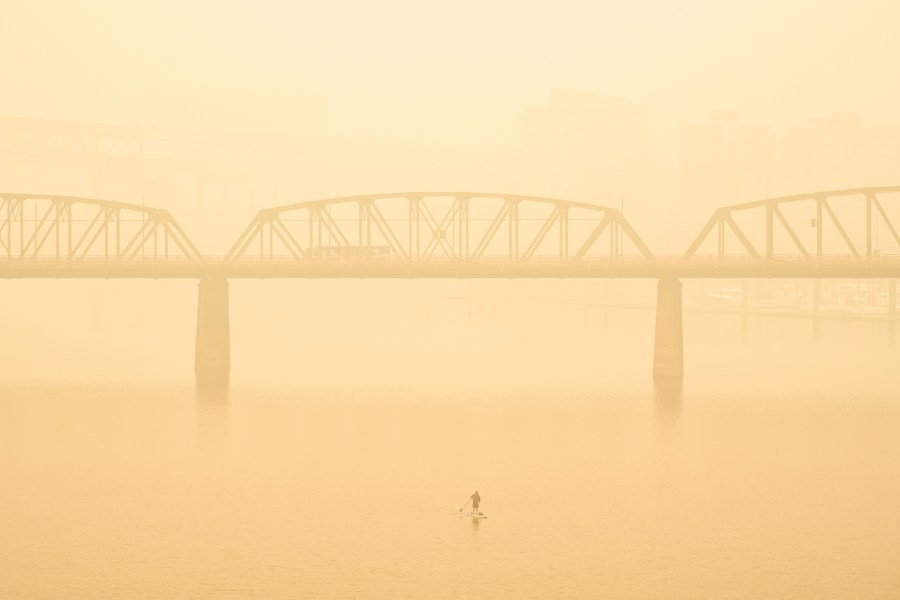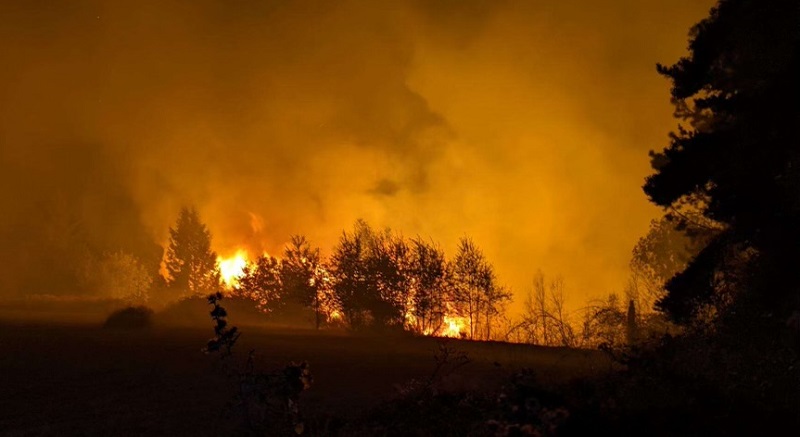PORTLAND, Ore. (KOIN) — Portland’s average air quality in 2022 was nearly two times worse than the standards recommended by the World Health Organization, an annual world air quality report published by the air quality technology company IQAir shows.
According to the March 14 report, Portland’s air saw an average annual increase in fine particulate matter, labeled as PM2.5 (particulates 2.5 micrometers in size or smaller), in 2022. The Oregon Department of Environmental Quality warns that these breathable particles, which are roughly a fourth the size of a spec of pollen, are linked to serious health risks.
“Health studies over the past decade show that there are harmful effects from breathing PM particles,” the DEQ states. “PM can be inhaled deep into the lungs and can lodge there for weeks and months, aggravating asthma, heart disease, and other respiratory and heart conditions.”
According to IQAir, Portland had an annual air quality average of 9.9 micrograms of fine particulate matter per cubic meter of air in 2022. These levels nearly doubled the WHO’s recommended average of five micrograms of fine particulate matter per cubic meter of air.

IQAir spokesperson Jonathan Winslow, while summarizing info provided by the company’s CEO Glory Dolphin Hammes, told KOIN 6 News that the region’s decline in air quality was caused by wildfire smoke. While the West’s 2022 wildfire season was mild compared to recent years, Winslow said that a region’s air quality can also be affected by its proximity to a wildfire and what direction the smoke is blowing.
“Much of this has to do with wind patterns,” Winslow said. “Even a lighter fire season in one area can very often mean a notably worse pollution season in another, such as Portland, depending on how the wind carries the resulting smoke from the fires that do happen.”

The DEQ published similar findings in June of 2022, showing that air quality has steadily decreased around the state in the last decade due to the West’s ongoing wildfire troubles. The report also states that, if wildfire trends continue, Oregon can expect an increasing number of days with hazardous air quality during wildfire season.
“The data shows that [air quality index] categories from wildfire smoke have been increasing starting around 2012, with more frequent days at more ‘unhealthy’ or worse levels, including the record-breaking events of September 2020,” the DEQ report states. “If these trends continue, Oregon should expect to see an increasing number of [hazardous air quality days] during the summer, and not just in Southern Oregon where it is more common, but across the state. This will include areas which have not typically seen significant smoke impacts, such as the north coast area, the Willamette Valley, and the Portland Metro area.”


